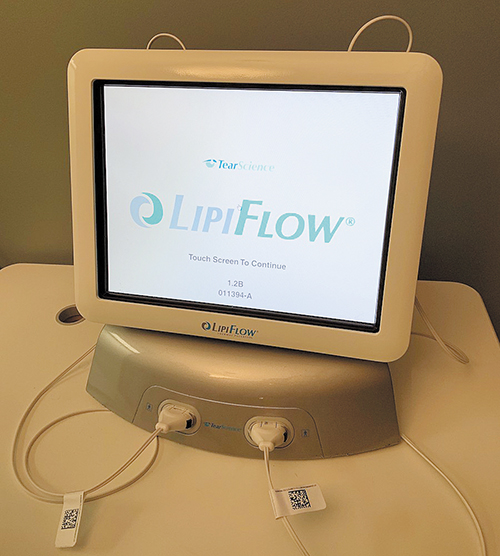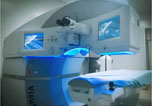- Over 55,000 LASIK and cataract procedures (including on over 4,000 doctors)
- The FIRST center in TN to offer Laser Cataract Surgery
- Introduced bladeless all-laser LASIK to the state
- Implanted the state's first FOREVER YOUNG™ Lens
- The first surgeons in the US to perform a new Intacs surgery to treat keratoconus
- Helped patients from 40 states and 55 countries
- International referral center for cataract surgery and LASIK complications
- Read Dr. Wang's book: LASIK Vision Correction
Why did you decide to have LASIK? Why did you choose Dr. Wang? How has your life changed since your LASIK procedure?
What is your advice for people considering LASIK?
Click to read more
| Home | Print This Page |
LipiFlow®: Advanced Procedure to Treat Meibomian Gland Dysfunction & Chronic Dry Eye
Wang Vision 3D Cataract & LASIK Center, Nashville, Tennessee
Media reports:
- "Nashville eye doctors offer top treatments for dry eye, meibomian gland dysfunction", Tennessean, October 21, 2019.
Dry eye is one of the most common reasons people seek care from an eye doctor. Symptoms include a gritty sensation, watering, redness, and fluctuation in vision.
Dry eye often results in a cascade of inflammation affecting the surface of the eye, which can lead to potential damage including scarring and loss of vision clarity if uncontrolled over time. One of the most pressing modern risk factors for dry eye is increased time using digital devices, often starting in early childhood. Blinking is essential to spread tears evenly over the surface and promote normal eyelid gland function. Yet, the blink rate has shown to be significantly reduced during the use of digital screens.

A landmark 2012 study showed that 86 percent of patients with dry eye have concurrent meibomian gland dysfunction. The meibomian glands line the upper and lower eyelids. Healthy glands produce a free-flowing, oily, lipid solution that helps to prevent tears from evaporating. Over time in just about everyone, the glands start to produce very thick secretions and become backed up and clogged. This prevents the release of the solution which, in turn, causes tears to evaporate too quickly, leading to dry eye. If the blockage persists for too long, the glands start to function poorly and eventually start to drop out altogether, leading to a complete loss of secretion. Once gland loss occurs, it is believed to be irreversible.
The LipiView® and LipiScanTM devices from Johnson & Johnson are advanced technologies to image these glands. This safe, non-invasive technology has recently become available to eye doctors and is similar to how a dentist uses X-rays to image the deeper structure of teeth. High definition imaging of the glands in the eyelid can determine if they are functioning properly or if loss is starting to occur. This loss can lead to a cycle of worse dry eye and worse symptoms. Fortunately, if treatment is initiated, the meibomian glands can be kept flowing properly, thus promoting improved comfort and long-term function.
Traditional treatments for meibomian gland dysfunction include home therapies to warm the glands. Patients can use warm washcloths or store-bought masks that are designed to heat the glands followed by gentle eyelid massage. The difficulty is that the glands line the inner surface of the eyelids, so adequate heat must be applied to travel through the skin and reach the glands. Commonly, patients do not use enough heat and therefore the compresses are less effective. However, patients many see improvements in treatment of the condition if they are diligent about keeping up with these compresses each and every day.
A sophisticated and FDA-approved treatment for meibomian gland dysfunction can be administered in the office of an eye doctor in a single session. The LipiFlow® Thermal Pulsation System by Johnson & Johnson has several significant advantages to traditional home treatments. Foremost, the glands are heated from the inside, where they can be most effectively reached. This brings the secretions inside the gland to a temperature that causes them to flow freely, like melting candle wax. A precise, gentle pressure is applied to the eyelids throughout the procedure to help improve the gland output.
The treatment takes 12 minutes, is noninvasive and pain free. Small applicators are placed under the eyelids, comfortably vaulting over the delicate structures of the eye surface. Most patients report the procedure is a spa-like experience for the eyes, much like a gentle massage. Patients can resume all normal activities immediately following the treatment. For many, relief of symptoms is realized within days. Furthermore, the procedure promotes the glands of the eyelids to stay free-flowing and form healthy secretions, which prevents loss of function of the glands. In-office treatments have beneficial effects that can last up to one to two years and might be extended further with diligent home therapy afterwards.
These advancements in imaging and treatment provide a sophisticated way to promote good eyelid health and improve dry eye symptoms in the short and long term. The procedure is not covered by insurance, but patients generally feel the cost is worthwhile given the benefits in symptoms they experience after treatment.
Our new texbooks
A 501c(3) charity that has helped patients from over 40 states in the US and 55 countries, with all sight restoration surgeries performed free-of-charge.




















